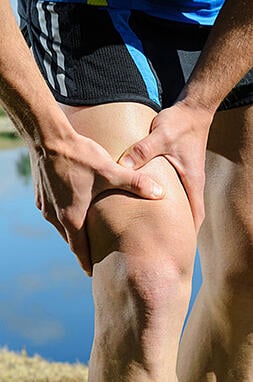If you are a physically active individual, and I hope you are, at some point you will probably have to deal with an injury. Sprains, strains, pulls and “itis” of any kind at some point is a cost of doing business in fitness and performance. But does it mean that you have to put all progress on hold during the healing process? I believe that injury is not synonymous with inability. Let me explain.
Consult a Doctor for Exercise Injuries with Pain
First and foremost, I am not advocating disregarding any recommendations from your physician. If you feel pain in any movement, which can be discovered in a quick and easy Functional Movement Screen; or maybe you have suffered some kind of acute trauma; you should absolutely consult a doctor about that pain and follow the directions of that health professional. After you have taken those important steps, it’s time to evaluate what you are still capable of performing and put a plan in action that can keep you on track to health and physical fitness. In my personal experience and working with individuals for over a decade, there are ways to continue to progress while you are injured.
Depending on the type of injury (the body part, classification, and severity), you can focus on other aspects of your fitness that will not affect the rehabilitation of the injury.
Injury Scenarios and How to Keep Working Out
Here is a list of common injury scenarios and some tips to continue to get work done. Again, these are all dependent on the type and severity of the injury, and physician recommendations should be followed at all times.
|
Type/Body Part |
Alternative Focus |
Exercise Examples |
|
Upper body (arms, shoulders, |
Lower body, core stability and |
Body weight squat variations, |
|
Lower body (legs, hips, ankles) |
Upper body, core stability and |
Seated/lying dumbbell pressing |
|
Back (lumbar, T-spine, |
Hip mobility, shoulder mobility, |
Foam rolling, hip stretches, |
|
Skeletal (bones) |
Low-impact movements, |
Cycling, rope machine, cycle |
|
Soft tissue (muscle, fascia, |
Mobility and stability work |
Foam rolling, lacrosse ball |
The bottom line is simply that progress does not need to stop due to an injury and that you can focus your attention on parts of the body that are not affected by the injury. Keep it simple: if your arm is injured, focus on the lower body, and perform mainly primal exercises such as squats, lunges, and hinges. I remind you to follow the recommendations of your physician, and at the same time, seek out the advice of your fitness professional here at NIFS to help guide you through an injury.
Tony Maloney is the Fitness Center Manager and leads Group Training Sunday through Thursday. Follow Tony on Facebook. Learn more about the NIFS bloggers.
